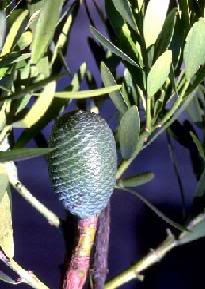What makes Ancient Kauri so incredible?
Ancient Kauri radiates its incredible history. While it is similar in density to cherry, with textures similar to basswood, it feels like no other wood. Most woodworkers have been compelled to slow down from their usual methods and use an approach that is more attentive to the wood and techniques.
The harvesting of Ancient Kauri is an ecologically sound practice. Because the harvesting of this wood entails no cutting of any standing trees, and all of the land that the trees come from is redressed to its original contours, Ancient Kauri is totally eco-friendly.
Is this wood Petrified?
No.
It can be worked with normal woodworking tools, in the same ways you are used to working with other species. One notable difference: when finishing Ancient Kauri, special rewards await the woodworker who sands Ancient Kauri to 600 grit and higher. The wood grains and textures seem to come alive when polished to these levels.
Click here to see extraordinary examples
The Ancient Kauri is how old?
Radio carbon dating places the age of the Ancient Kauri trees that are being excavated from the northland of New Zealand at 50,000 years old. This is the maximum limit of radio carbon dating, it is probable that this wood is even older.
Some other ages:
- 16,000 years ago the depressions that will become the Great Lakes were fully formed
- This region became ice-free approximately 5,000 years ago, at the end of the last ice age.
- The oldest Homo Sapiens were on earth around 40,000 years ago.
- Wooly Mammoths and Saber Tooth Tigers became extinct about 10,000 years ago.
- The La Brea Tar Pits in California were actively gaining specimens 40,000 to 10,000 years ago.
How is Ancient Kauri harvested?
The logs are below the surface of what are usually farm fields and ranch lands. When a site is identified, permission is secured and expert operators of heavy equipment carefully expose and lift the logs out of the prehistoric bogs.
They are immense, and raising the logs to the surface is just part of the job: moving them to a location to begin the milling process, and the milling itself, has necessitated some innovative equipment designs and plain old lumberman's ingenuity.
Does Kauri still grow?
Yes.
The Kauri trees still grow in New Zealand, and other locations around the Pacific Rim, including Australia, the Fijian Islands, Malaysia, the Philippines, Indonesia and New Caledonia. The early settlers of New Zealand harvested incredible amounts of Kauri around the turn of the last century, using it first for ship building, and then for everything from houses and bridges to furniture and household items.
Law now protects the Kauri trees that grow in New Zealand, and there are reserves in various areas of the North Island. Ancient Kauri trees, however, are not found any other place else on earth.
The oldest fossil of New Zealand Kauri is 175 million years old.
For the Botanist and Arborist
The scientific name for Kauri is
Agathis australis. The species is endemic to New Zealand, and belong to the Araucariaceae plant family. These plants are conifers: they produce cones instead of flowers for reproduction.
 Click here for more about Agathis australis
How do I know this is the real thing?
Click here for more about Agathis australis
How do I know this is the real thing?
Every shipment from New Zealand is sampled and tested by the leading laboratory in the United States for Radio Carbon Dating, Beta Analytic of Miami, Florida. Every piece of Ancient Kauri will be accompanied by a Certificate of Authenticity.
Certificate of Authenticity example
What sizes are available?
There are a variety of sizes and shapes available, including (but not limited to)
- Extremely large slabs 40" wide X 10ft long X 3 1/2" thick!
- 4/4 (1") boards to 10 ft. long.
- 8/4 (2") boards to 10 ft. long.
- Natural edged timbers and boards.
- Large and small turning blocks.
- 2"; and 3"; thick ";stump slabs"; (high activity in the grain similar to a burl).
- Pieces of stumps (for bases of tables).
- Plywood and veneer products.
- Let us know what your needs are, and we will do our best to accommodate you!
Ancient Kauri is the oldest workable timber on earth.













 Απάντηση με παράθεση
Απάντηση με παράθεση
